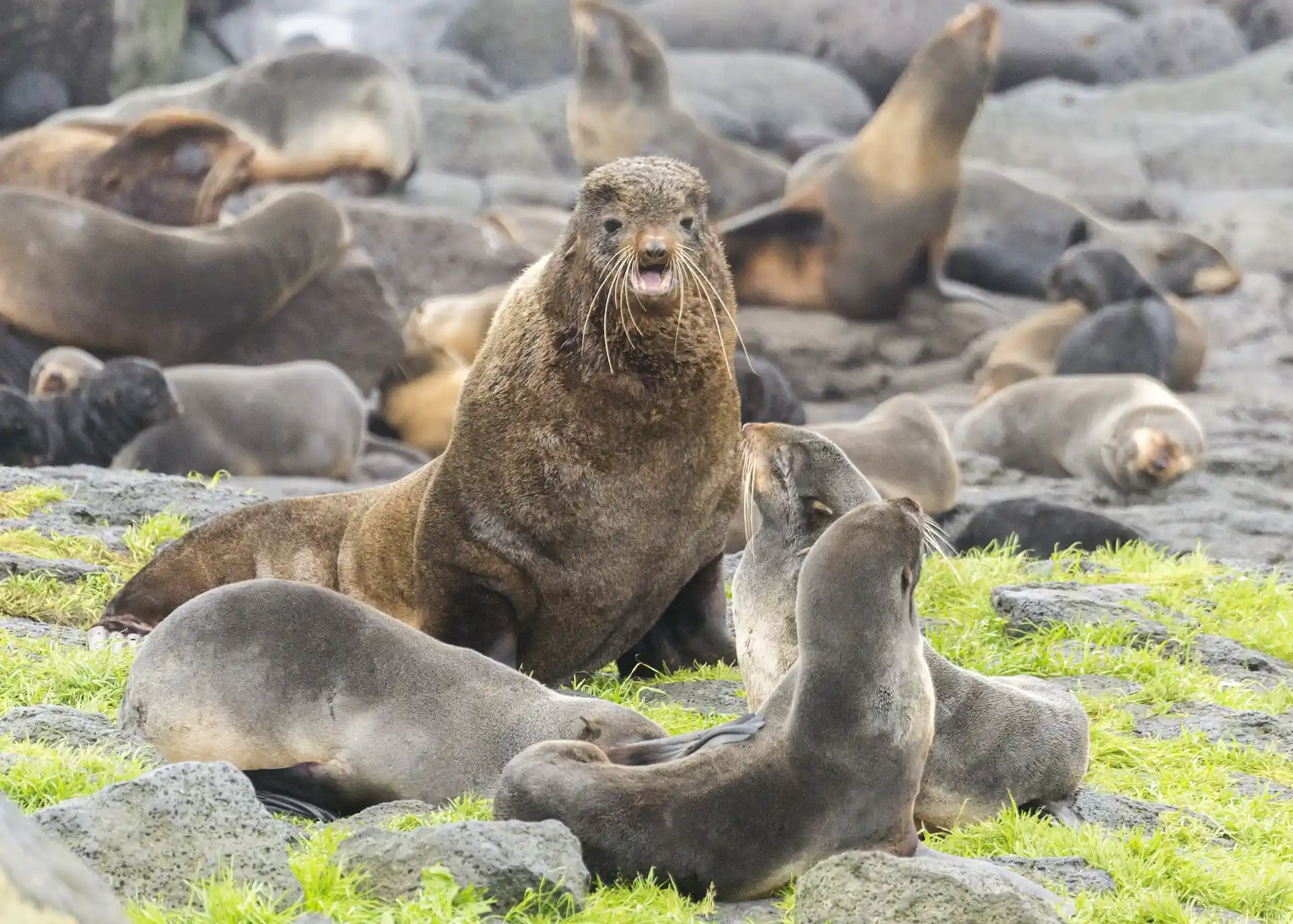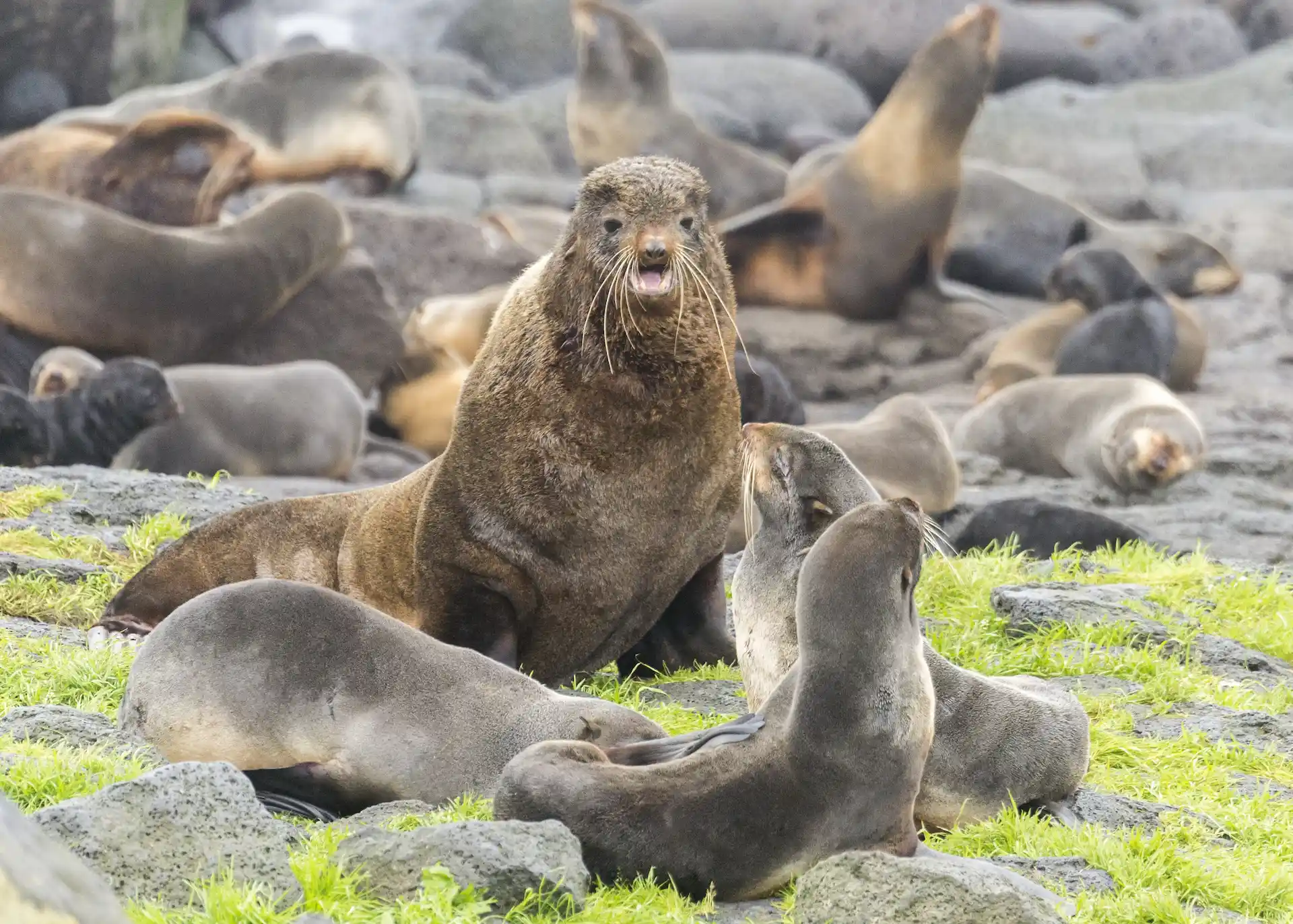
Wildlife Fact Sheet
Northern Fur Seal
Callorhinus ursinus
About
Northern fur seals may have “seal” in their name, but they’re actually more closely related to sea lions. The term “seal” can technically apply to the 32 species that refer both to seals and sea lions. The family Otariidae includes fur seals and sea lions whereas family Phicodae includes “true” seals. Northern fur seals have strong front flippers that help them move quickly through the water and on land so they can escape quickly from a predator if the need arises.
Curious about how to tell Northern fur seals apart from “true” seals? Seals have ear holes, while Northern fur seals have visible ear flaps. Also, they use their fore-flippers to propel through the water and “walk” on land, while seals scoot along on their bellies on land.

Did You Know?
Northern fur seals spend almost half of the year out at sea. To sleep, they roll over onto their backs and stick their fins out to float.
Join our mailing list
Status and Conservation
It’s fairly easy to tell the difference between male and female fur seals: Males are much larger than females. A bull can weigh almost 600 pounds and has a very thick neck and mane. In breeding season, adult males won’t eat and can lose up to 20% of their body weight.
Breeding season gets very competitive. Most of the breeding activity is centralized—almost 75% of the world’s population of fur seals breed on the Pribilof Islands. Male fur seals will arrive at the breeding site about a month before the females and start fighting for territory. These fights can be brutal, and they use their sharp teeth and strong necks to slash at opponents. Only the biggest and most powerful males can land the coveted title of “beachmaster,” while the smaller males are relegated to the edge of the breeding zone. When the females arrive, they are attracted to the male’s territory and then choose a mate and become part of his “harem.”
Fast Facts
- Northern Fur Seal Effects of Marine Debris
- Northern Fur Seal Male Weight